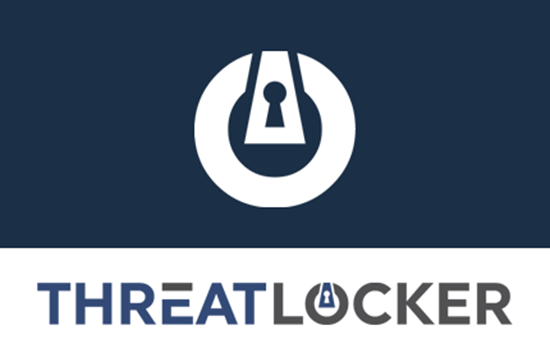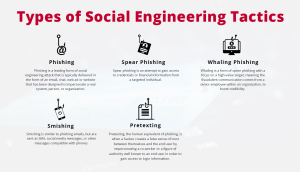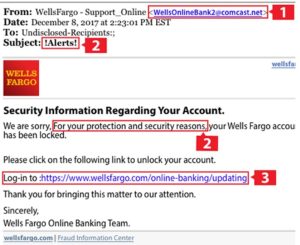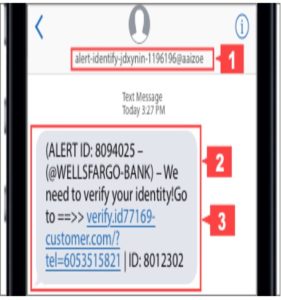
IT Security
Every day security threats and security breaches increase and companies struggle to keep up. With LBMC Technology Solutions, you can scale up your security resources without adding staff or a whole security team – saving you time and money, while increasing the security measures for your data.
We will help you set yourself up for success, defending you against the constant emergence of new cyber threats. The needs of networks can vary based on the size and type of organization. Determining how to best protect your assets and educate your employees can present unexpected and unique challenges. If you’re looking for some guidance on how to best secure your networks, just let us know. We can help you get started today with our different types of it security.
Client Testimonials
What is IT Security?
IT security, also known as information security or cybersecurity, refers to the practice of protecting information technology systems, networks, data, and assets from unauthorized access, use, disclosure, disruption, modification, or destruction. IT security aims to ensure the confidentiality, integrity, and availability of information by implementing a combination of technologies, processes, and policies.
IT security encompasses a wide range of security controls and practices to address various threats and vulnerabilities that can compromise the security of digital assets. Some key aspects include:
- Network Security: Network security focuses on protecting computer networks from unauthorized access, attacks, and data breaches. Types of network security involves implementing firewalls, intrusion detection and intrusion prevention systems (IPS), secure configurations, and secure network protocols to secure network traffic and prevent unauthorized access to systems.
- Data Security: Data security involves safeguarding sensitive data from unauthorized access, disclosure, alteration, or destruction. This includes encryption of data in transit and at rest, access controls, data classification, data loss prevention (DLP) measures, and secure data storage practices.
- Application Security: Application security aims to protect software applications from vulnerabilities and threats. This involves secure coding practices, regular patching and updates, input validation, secure authentication and authorization mechanisms, and application-level security testing.
- Endpoint Security: Endpoint security focuses on securing individual devices, such as computers, laptops, smartphones, and tablets, from malware, unauthorized access, and data breaches. This includes implementing antivirus software, host-based firewalls, device encryption, and remote wipe capabilities.
- Identity and Access Management (IAM): IAM is concerned with managing user identities, authentication, and access to systems, applications, and data. It involves implementing strong authentication mechanisms, such as multi-factor authentication, and establishing access controls based on user roles and least privilege principles.
- Security Monitoring and Incident Response: Security monitoring involves continuous monitoring of IT systems and networks to detect and respond to security incidents. This includes log monitoring, intrusion detection systems, security information and event management (SIEM) tools, and incident response processes to investigate and mitigate security breaches.
- Security Awareness and Training: Security awareness programs aim to educate employees and users about security best practices, email security, potential threats, and their roles in maintaining security. Training programs can cover topics such as password hygiene, phishing awareness, social engineering, and safe browsing practices.
- Compliance and Governance: security also involves ensuring compliance with relevant laws, regulations, and industry standards. This includes data protection regulations (such as GDPR or HIPAA), industry-specific security frameworks (such as PCI DSS), and internal security policies.
IT security is an ongoing and evolving process, as new threats and vulnerabilities emerge. It requires a combination of technical measures, user education, and proactive monitoring to mitigate risks and protect digital assets from potential harm.
What is the role of IT Security?
The role of IT security is to protect an organization’s information technology systems, data, and networks from unauthorized access, misuse, disruptions, and threats. This encompasses various practices, technologies, and policies designed to ensure the confidentiality, integrity, and availability of information assets.
Here are some key aspects:
- Risk management: IT professionals assess and manage risks to information assets by identifying potential vulnerabilities, evaluating their potential impact, and implementing controls to mitigate those risks. This involves conducting risk assessments, vulnerability scans, and penetration testing to identify weaknesses and proactively address them.
- Data protection: IT security focuses on safeguarding sensitive data from unauthorized access, disclosure, alteration, or destruction. This involves implementing encryption, access controls, data loss prevention measures, and secure data storage practices. Data protection also includes backup and disaster recovery strategies to ensure data availability and business continuity in the event of an incident.
- Network security: IT professionals establish and maintain secure network architectures and protocols to protect against unauthorized access, intrusion, and network-based attacks. This includes implementing firewalls, intrusion detection and prevention systems, virtual private networks (VPNs), and secure Wi-Fi networks. Network security also involves monitoring network traffic for suspicious activities and responding to incidents.
- Identity and access management: IT security ensures that only authorized individuals can access systems, applications, and data. This involves implementing strong authentication mechanisms, such as multi-factor authentication, and establishing access controls based on the principle of least privilege. IT professionals also manage user accounts, passwords, and privileges to prevent unauthorized access.
- Security awareness and training: IT security plays a role in educating employees about security best practices and raising awareness about potential threats. This includes providing security training, conducting phishing simulations, and promoting a culture of security within the organization. By educating users, organizations can reduce the risk of human error and improve overall security posture.
- Incident response and management: IT professionals develop and implement incident response plans to effectively respond to and mitigate security incidents. This involves identifying and containing security breaches, conducting forensic investigations, and restoring systems to normal operation. Incident response also includes learning from incidents to improve security controls and prevent future occurrences.
- Compliance and regulatory adherence: IT security ensures that the organization complies with relevant laws, regulations, and industry standards related to information security. This includes adhering to data protection regulations, privacy requirements, and industry-specific security frameworks. IT security professionals establish controls, conduct audits, and maintain documentation to demonstrate compliance with applicable standards.
The role of IT security is to protect an organization’s digital assets, mitigate risks, and ensure the confidentiality, integrity, and availability of information. It involves a combination of technology, processes, and awareness to create a secure computing environment and enable organizations to operate with confidence in the digital age.
Datto
We are a Blue Diamond partner in Datto’s global partner program, the top 2% of all Datto partners worldwide. Datto provides a toolbox of products and services which are tailored to managed service providers and the businesses they serve. These products and services are easy to use. Datto’s industry-leading MSP tools are designed to optimize your business and expand the services you deliver to clients.
Their integrated, scalable, and innovative suite of hardware and software solutions work together to drive success for MSPs of any size. Datto solutions provide backup/disaster recovery protection for on-premise servers, desktops, laptops, and Azure hosted cloud servers. Additionally, they provide protection for Microsoft Dynamics 365 deployments.
Datto Business Continuity and Disaster Recovery Tools:
- SIRIS – High performance business continuity
- ALTO – Business continuity for small business
- Cloud Continuity for PCs – Backup, restore, and protect endpoint data
- Continuity for Microsoft Azure – Data protection for Microsoft Azure
- File Protection – Backup and restore files and folders
- SaaS Protection+ – Secure, protect and restore SaaS applications
Amazon Web Services
LBMC Technology Solutions offers cloud consulting, deployment, migration, and disaster recovery services using Amazon Web Services (AWS). By using cloud computing, organizations can achieve a lower variable cost than they could get on their own. AWS offers a broad set of global computing, cloud security, storage, database, analytic, application, and deployment services.
These services help organizations to lower IT costs, simplify operations, and scale applications quickly.
LBMC Technology Solutions focuses its Infrastructure as a Service (IaaS) expertise on three major areas:
- Replacement of on-premises network infrastructure
- ERP software migration
- Fully Managed Disaster Recovery Services.
Benefits of Amazon Web Services
- Lower IT costs
- Simplify operations
- Quickly scale applications with ease
Azure
Deploy how you want it, with your choice of tools. Microsoft Azure is a collection of integrated cloud services. IT professionals use these services to build, deploy and manage applications.
These applications are deployed and managed through the Microsoft network of data centers. Enjoy freedom to build and deploy at your leisure, using the tools, frameworks and applications of your choice.
Microsoft Azure has custom cloud solutions especially designed for the healthcare, financial, retail and discrete manufacturing industries. Azure can also connect with SharePoint and Microsoft Dynamics for greater user experience.
Benefits of Azure
- Digital marketing – Connect with digital campaigns that are personalized
- Mobile – Reach customers everywhere, on any device, with a single mobile app
- Cloud Migration – Increase the speed of your digital transformation with cloud migration solutions
- Backup and archive – Protect your data and applications to avoid costly business interruptions
- Disaster Recovery – Protect all major IT systems
WatchGuard

No matter your organization’s size, protect your network infrastructure with a Watchguard next generation firewall.
Safeguard your network with WatchGuard’s award-winning, enterprise-grade network security solutions. Now everyone can have enterprise level protection in one cost-effective, centrally managed solution. With WatchGuard, businesses everywhere can provide a trusted wireless environment for their team members.
The system can be easily configured to give organizations peak performance. Organizations will expect this performance at a desirable price point. With visibility into the entire organization, WatchGuard puts your mind at ease and allows you to focus on building your business.
Benefits of WatchGuard
- Simplicity – Easy and straight-forward to configure, deploy and centrally manage.
- Enterprise-Grade Security – Best-in-class security services without the cost or complexity.
- Visibility – Full network visibility with the power to take action immediately.
- Performance – Fastest UTM performance at all price points.
Secure Wi-Fi
Wi-Fi is Easy. Secure Wi-Fi is the Challenge.
Wi-Fi doesn’t give you a competitive advantage, it offers you a chance to compete. With benefits ranging from increased productivity to improved customer satisfaction, implementing a wireless network for your employees and guests has become the table stakes of doing business, but implementing the wrong technology puts your corporate data, customer privacy, and reputation at risk.
We’ve partnered with WatchGuard Technologies to offer a complete portfolio of wireless solutions that lead the industry in security, visibility, and ease of management.
- Wireless Security: Utilize the industry’s only reliable WIPS technology to block malicious threats ranging from man-in-the-middle attacks to rogue devices. Easily step-up the security of your wireless network by passing all AP-generated traffic through a WatchGuard Firebox security appliance to prevent eavesdropping, malware traps, and data theft.
- Guest Engagement & Analytics: Leverage custom branding and engagement tools to customize the Wi-Fi experience for your guests to improve their browsing experience and the perception of your brand. Once guests are connected, gain access to invaluable demographic, location, and browsing data that can be used to drive a variety of future marketing and sales activities.
- Simplified Management: Experience the easy and intuitive way of managing APs by location and the powerful templates that make administration tasks a breeze through top-down inheritance. Quickly drill down into visual dashboards or automated reports on topics such as Wi-Fi performance, PCI compliance, and airspace risk.
Enabling Wi-Fi is easy, secure Wi-Fi is the challenge. Let us help you connect securely, with confidence.
Threatlocker

Threatlocker – Industry Cybersecurity Leader
- Allowlisting – Only permits approved files to execute and blocks everything else.
- Ringfencing – Allows for granular control over what applications are allowed to do.
- Elevation Control – Run selected applications as a local administrator without making users local administrators.
- Storage Control – Gives you control over all storage device access including USB devices, network shares, and even individual files to help protect data.
- Network Access Control – Protect your endpoints and servers from untrusted devices on you LAN or the internet.
Huntress

Huntress – Add a safety net to your security stack
- Catch hackers who are hiding in plan sight while plotting their next attack.
- Enable quicker ransomware detection and removal to reduce risk.
- Leverage Huntress to extend your front end protection.
- External recon – highlight external attack surfaces and expose easy entry points.
- Managed endpoint detection and response fight against today’s hackers.
- 24/7 human threat hunting.
- Scale you cybersecurity practice with plug-and-play templates
Social Engineering
Threat actors are always thinking of new ways to target individuals and businesses, trying to acquire personal information, login credentials, getting the user to download malicious software or other sensitive information. One of the most common trends today is social engineering. Social engineering is pretending to be someone else to fool a person into revealing sensitive information, passwords, or other information that compromises a target system’s security. Do not become a victim of social engineering by unwittingly giving out information to an unknown person. A skilled social engineer will convince you that a). they are someone they are not and b). there is no harm in giving them the information they are requesting or entering information on malicious websites that appear to be genuine.
Always remember, that social engineering can happen through multiple sources such as email, text messages, and telephone calls. Take these steps to help ensure that you don’t become a victim: Authenticate, Authorize, Make A Phone Call Back, Don’t Be Pressured, Be Alert, Be Polite but Firm, and Report. With the rising amount of ransomware attacks and phishing messages, cyber security has never been more important than it is today.
Another rising trend alongside social engineering is more and more scams on the internet, to learn more read our blog post about common Facebook Marketplace scams.
Social Engineering Tactics

Phishing Indicators Example
Phishing emails are becoming more sophisticated and difficult to distinguish from legitimate emails. By impersonating a reputable company’s communications (with pretexting attacks), these emails tend to use clever and compelling language, such as an urgent need for you to update your information or communicate with you for your security. To spot a phishing email, look for a combination of red flags. In this example, notice:
1. Non-Wells Fargo email address: The email address of the sender does not include the wellsfargo.com domain name, instead using something like “comcast.net”: WellsOnlineBank2@comcast.net.
2. Urgent call to action: The email includes an urgent request in the subject line and message copy, such as “for your protection and for security reasons.” Phishing emails may also contain extra spacing or unusual punctuation in addition to other red flags.
3. Suspicious URL: The email contains a link to a non-Wells Fargo URL, which could be a fraudulent website. If you’re using a laptop or desktop computer, you can check a link’s URL by hovering over it with your cursor, and the URL will show in your browser window.

Smishing
How to recognize smishing.
Smishing attacks (SMS Phishing) use similar techniques as phishing emails: a sense of urgency to secure your account or verify your identity, using words like “locked,” “deactivated”, or“ for your protection” to describe your account status. These smishing attacks may prompt you to call a phone number, click on a link, or respond directly with personal or account information. To spot a smishing text, look for a combination of red flags. In this example, notice:
1.Suspicious sender: The text was sent by an unknown phone number, instead of one of Wells Fargo’s official short codes: 93557, 93733, 93729, or 54687.
2. Unusual text treatments: The text message contains a combination of unusual text treatments, including all caps, arrows, ID numbers, and an exclamation point.
3. Unprompted identity request: The request to verify the recipient’s identity was unprompted. Wells Fargo will request to verify your identity via access code only when prompted by an action that you have initiated, such as signing on to online banking or sending money.
To learn more about social engineering and how to protect yourself, check out our podcast.

What Makes LBMC Technology Solutions Different?
For over 20 years, LBMC Technology Solutions has been inspiring greatness through technology. We understand how important a reliable technology infrastructure is to your one-of-a-kind business. As your partner, we evaluate your unique business processes and current systems, then identify and apply the most effective solutions.
LBMC Technology Solutions is an award-winning reseller of recognizable industry standard software. If your business needs are beyond what an out-of-the-box software can offer, we will tailor a custom software solution to fit your specific business needs.
Our consultants build connections, nurture innovation, establish ongoing communication, and collaborate with you to architect the best system integration option to help you run your business better. We value our clients’ experience and have made it a critical part of our solutions to ensure we are earning your trust and becoming a long-term partner as your company grows.
Whether you need to supplement or outsource a single function, need an ally you can trust, or are in the market for a comprehensive business partner, LBMC Technology Solutions and our Family of Companies can simply be whatever your business needs us to be.
Contact Us
We’re happy to answer any questions you may have. Please send us an email using the form and one of our professionals will get back to you promptly.
Headquarters – IT Security Nashville, TN:
201 Franklin Road
Brentwood, TN 37027
Phone: 615-377-4600
Office Hours: 8am-5pm, Monday-Friday
IT Security Charlotte, NC
3700 Arco Corporate Drive, Suite 175
Charlotte, NC 28273
704-846-6750
IT Security Knoxville, TN
2095 Lakeside Centre Way
Knoxville, TN 37922
865-691-9000
Inquiries
To better serve you, please review our communication options for the best way to contact us.
If you are seeking general information. Please check out our FAQ page.
If you are interested in more information, complete the form below to have an LBMC Technology Solutions expert contact you.
- On July 10, 2023, Microsoft will be rolling out a… Read more » The post Business Alert: Microsoft Multifactor Authentication (MFA) Services appeared first on LBMC Tech.
- Following the Microsoft Dynamics Community Summit last October, many Microsoft… Read more » The post Microsoft Dynamics GP – A Look to the Future appeared first on LBMC Tech.
- The LBMC team recently returned from the Microsoft Community Summit… Read more » The post The Future of Microsoft Dynamics GP – What is the Roadmap of GP and What Will Your Organization’s GP Journey Look Like? appeared first on LBMC Tech.
